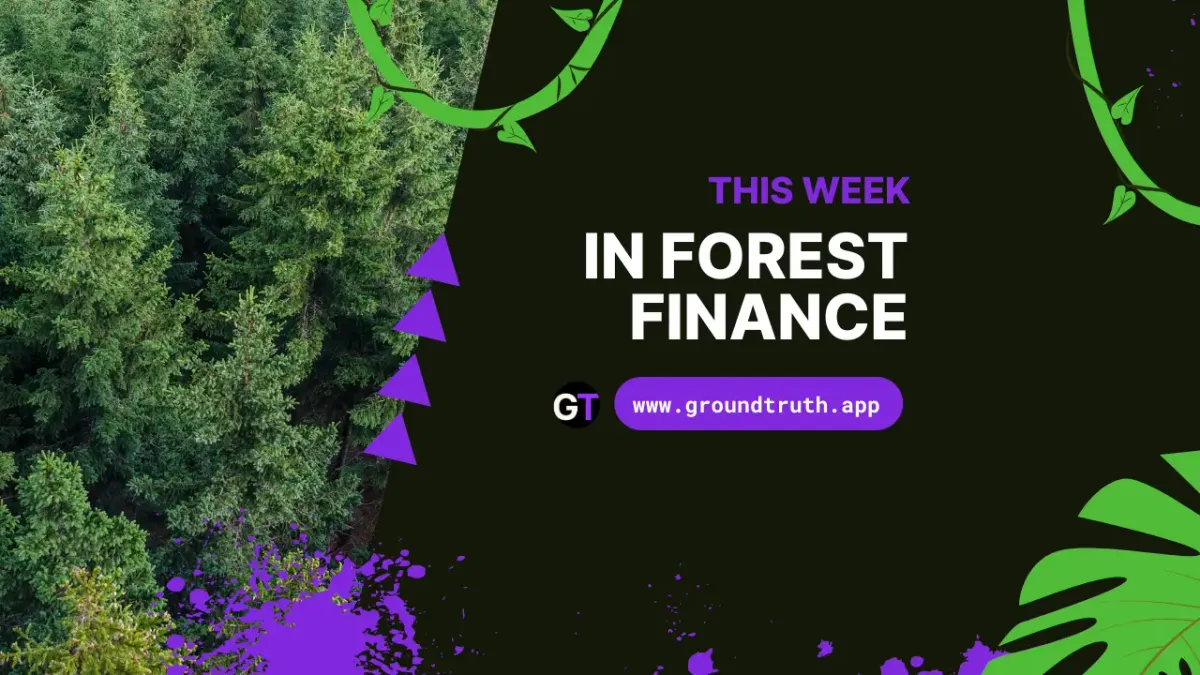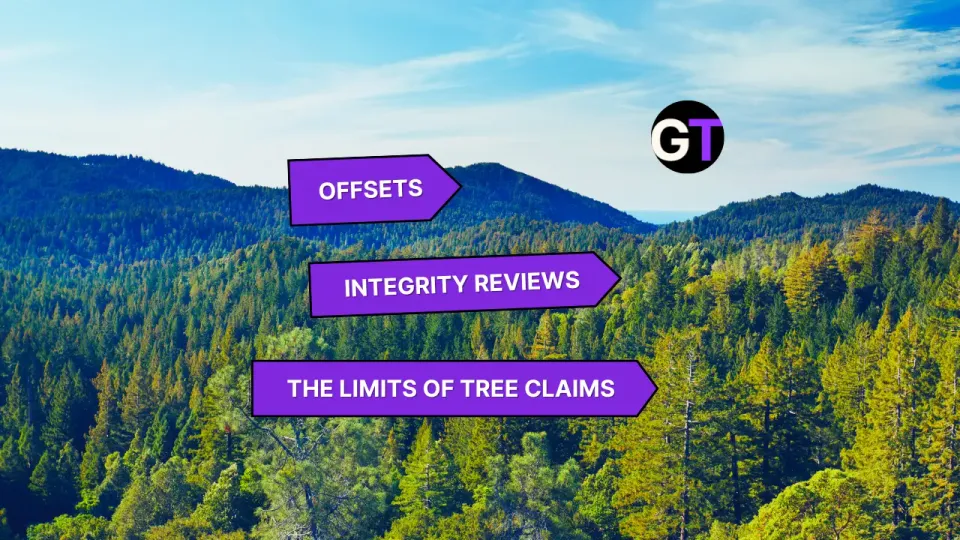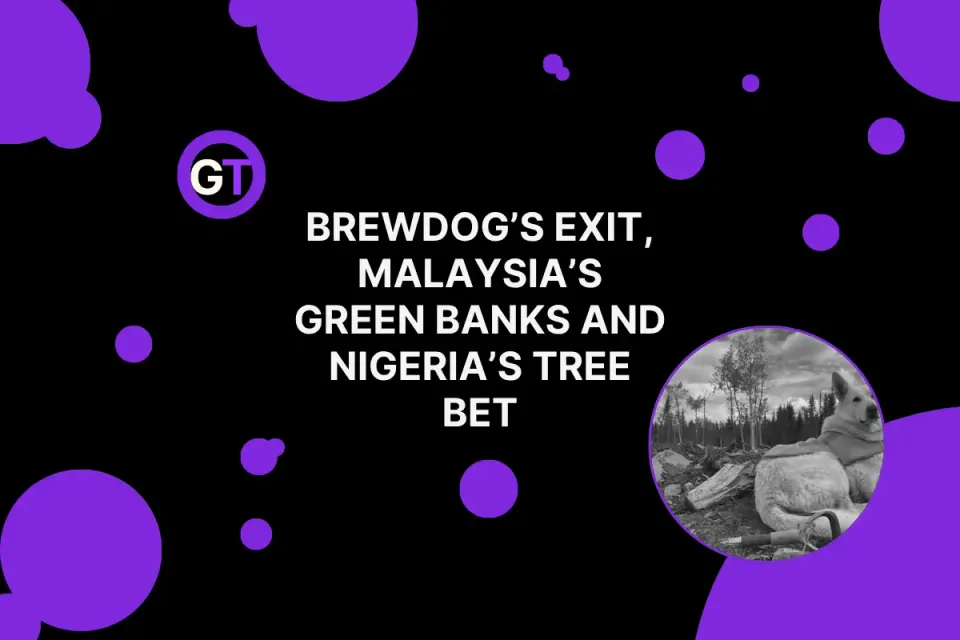This Week In Forest Finance, May 29
Tree funds bloom, budgets boom, and climate finance finds its roots—this week in forest money moves from Panama to Pennsylvania.

Scottish Landowners on Notice: Replant or Repay
Scotland’s tree-planting ambitions just hit a dry spell—literally. Amid unusually parched conditions, landowners receiving Forest Grant Scheme funds are being warned: if your saplings fail and you don’t replant, expect a grant clawback. With a 20-year commitment required to establish government-backed woodlands, climate volatility is turning reforestation into a risky business. As Scotland pushes to double its forest cover by 2045, the message is clear—plant smart, or pay up.
💬 Should climate-linked grants be more flexible—or are strict rules key to accountability?
👉👉 Read more in Forestry Journal
Panama's Indigenous Reforestation Project Pays for Carbon, Not Logging
In Panama’s Ngäbe-Buglé Comarca, a groundbreaking reforestation initiative is flipping the script on carbon finance. Co-led by the Smithsonian Tropical Research Institute and Indigenous leaders, the project pays farmers annual carbon credits—$130 per hectare for up to 20 years—without requiring them to harvest trees. By interplanting high-value native species on 100 hectares of community-owned land, the project fuses ecological restoration with economic self-determination. Participants get free seeds, tools, and even daily wages for planting and maintenance. The goal? A sustainable, grassroots carbon economy rooted in equity, not extraction.
💬 Can community-first carbon finance finally make reforestation profitable for those who do the planting?
👉👉 Read more in Mongabay
New York Opens Public Comment on $4.2B Bond Act Tree-Planting Guidelines
New York’s Department of Environmental Conservation is asking the public to weigh in on draft guidelines for reforestation and afforestation funding under the $4.2 billion Bond Act. The plan prioritizes sustainable, non-timber tree planting efforts—think local species, invasive removal, and soil prep—with a special focus on equity: 40% of grants are aimed at disadvantaged communities. Backed by Governor Hochul’s “25 Million Trees by 2033” initiative, the funding includes $32M for tech-driven tracking tools and $15M for resilient reforestation. Public comments are open until June 20.
💬 Will public input turn this massive tree budget into real climate action—or just another leafy wishlist?
👉👉 Read more at DEC
Global Land Restoration Could Cost Up to $2.1 Trillion—But Pays Off Big
Restoring Earth’s battered lands isn’t cheap—think $311 billion to $2.1 trillion over 10 years, according to a new global cost analysis of 243 projects. The price tag swings wildly based on region and restoration type, with forest management costing around $185/ha and silvopastoral systems spiking over $3,000/ha. The kicker? Most of these commitments come from low-income countries that can barely foot the bill, yet the economic losses from land degradation already top $6.3 trillion annually. The study urges global climate finance, PPPs, and market-based tools to turn pledges into impact.
💬 Can wealthier nations and private investors step up before restoration pledges rot on the vine?
👉👉 Read more in One Earth
DFC Unleashes $3B for Global Development—Reforestation in DRC Gets a Boost
The U.S. Development Finance Corporation (DFC) just dropped $3 billion across 22 projects, targeting everything from clean tech to financial system resilience. But one green gem stands out: a $500K investment in a reforestation project by Carbon Ventures Advisors in the Democratic Republic of the Congo. It’s part of a broader push to link climate action with development goals. Nigeria also scored big, with SME financing and agri-loans, but it’s the DRC trees that might make the longest-lasting impact—if the funding grows roots.
💬 Can a $500K seed spark true forest revival in one of Earth’s most critical carbon sinks?
👉👉 Read more in Naijapreneur
Mine to Forest: $298K Grant to Reclaim Pennsylvania’s Legacy Lands
A 123.5-acre slice of reclaimed mine land in Clearfield County, Pennsylvania is about to get a leafy makeover. The U.S. Endowment for Forestry and Communities has secured nearly $299K from the Susquehanna River Basin Commission to reforest the site, partnering with Bosland Growth to turn degraded land into a carbon-sinking, watershed-boosting forest. The project aims to serve as a model for how public grants and carbon markets can unite for long-haul restoration—Appalachia-style.
💬 Can mine-scarred landscapes become climate heroes with a little philanthropic push and some carbon credit finesse?
👉👉 Read more in Gant News
Canada’s Community Canopies Program Wants Your Tree Planting Proposals
The Green Municipal Fund (GMF) is now accepting applications for its Growing Canada’s Community Canopies (GCCC) initiative—offering up to $10M to fund new urban trees, forest restoration, and local greening projects. To qualify, municipalities or their partners must lead the way and ensure accountability. The catch? Planting has to hit the triple bottom line: environmental, economic, and social gains. With fall deadlines and spring 2026 planting in mind, it’s go-time for those ready to branch out.
💬 Could municipal-led tree planting become Canada’s coolest climate flex?
👉👉 Read more in Environment Journal

Edited by Chris Harris

This work is licensed under a
Creative Commons Attribution 4.0 International License.





